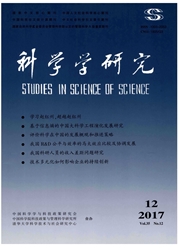

 中文摘要:
中文摘要:
R&D投资是转变经济发展方式和增强产业竞争力的关键,近年来随着我国研发经费支出的持续增加,作为要素投入的R&D投资是否越多越好成为亟待讨论的重要问题。本文以中国36个工业行业2002~2009年的面板数据为样本,利用门限回归模型检验了R&D投资对行业绩效的影响,来自全部工业行业数据的实证结果显示,R&D强度存在唯一的门限0.0089。分大类行业的估计结果表明:研发投资的作用机制在不同属性行业中存在明显差异,机械电子和资源加工业的R&D投资门限效应较为显著,且门限值(0.0125,0.0020)反映了行业生产的要素密集度特征;轻纺制造业由于R&D强度处于较低水平,不存在门限效应。
 英文摘要:
英文摘要:
R&D investment is the key to change economic development pattern and enhance the industrial competitiveness. In recent years, with the increasing R&D expenses in China, whether the more R&D investments are the better has become a much - debate is- sue. This article uses the panel data of 36 Chinese industries from 2002 to 2009 as samples and applies the threshold regression model to test the influence of R&D investments to the performance of those industries. According to the empirical results on the basis of all in- dustrial sectors, 0. 0089 is the single threshold value of R&D strength. Moreover, it is demonstrated that the action mechanism of R&D investments is obviously different in those industries with diverse qualities. Specifically, the threshold effects in the industries of mechani- cal and electronic and resources processing are relatively more remarkable, and the threshold values(0.0125&0.0020) reflect the characteristics of factor intensity; In addition, there is no threshold effect in the textile manufacturing because of its lower R&D strength.
 同期刊论文项目
同期刊论文项目
 同项目期刊论文
同项目期刊论文
 期刊信息
期刊信息
